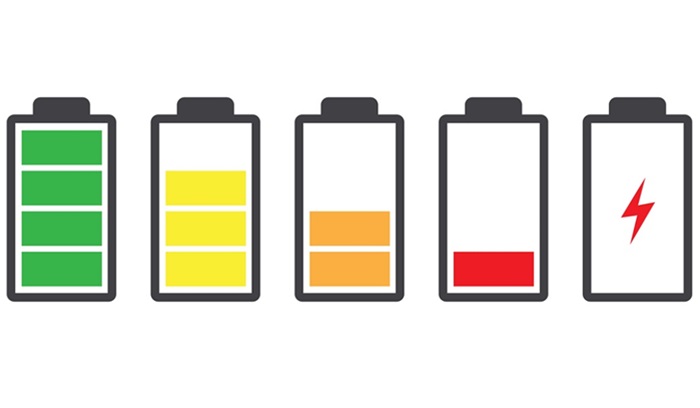Change is external results and internal processes
We tend to think of change as the novel outcomes we wish to bring about in ourselves and the world. We want to see policy, belief, or behavior change. We want to see tangible results that produce tangible benefits to public health, poverty alleviation, environmental protection, social justice, and so on.
But change is not only the end results we can witness. We might also think of it as the processes we undergo within ourselves, our communities, and our organizations that produce those results. In other words, change is not only the ends we, as purpose-driven leaders or change agents, seek but also the means we use to achieve those ends.
The stew of change
A broth is uniform and consistent—it is just one thing (or many things simmered down into one thing). A salad is disparate and diverse, with many different, distinct ingredients that coexist side by side in a bowl. A stew is somewhere in between. To bring out the right taste, smell, and texture, the many different ingredients must cook and blend into one another yet remain distinct.
The process of change is perhaps like a stew. It is never just one ingredient or many isolated ingredients. It is a confluence of many ingredients that must coalesce together to bring about the desired result.
We might think of change as having (at least) three core ingredients: 1) well-being, 2) service, and 3) integrity.
Change ingredient #1: Cultivating well-being
Well-being is the sustained state of being healthy and feeling truly alive – physically, emotionally, and spiritually. It is the affirming and enlivening experience of wholeness, abundance, and inner peace.
Cultivating well-being involves attuning to ourselves to understand what we need, refueling our internal reservoirs so that we can do what is needed in the world, and growing our internal capacity so that we have more to draw on in trying times. Through cultivating our well-being, we not only experience life more positively and abundantly, but we also have more to offer the world. While it looks different for everyone and in different moments, cultivating well-being often involves physical exercise, creative expression, building meaningful relationships and community, meditation or other mindfulness or spiritual practices, therapy or somatic work, eating nourishing food, resting, and pursuing our passions.
Without well-being, one cannot be a change agent, at least not for long. Without sustained well-being, they won’t have the internal energy to do the highly demanding work needed in the world. It would be as if we were trying to start a car while the battery was dead. Some pit self-care and social impact against one another, as if they are competing against one another for our limited resources. In reality, it’s quite the opposite. Self-care generates the energy necessary to drive social impact.

However, we can also arguably focus too much on our own well-being. We can hoard an overabundance of internal resources that we do not share with others. We become so focused on our own well-being that we forget to apply our internal resources to those in greater need. It becomes like trying to charge a phone or car when it’s already full. For change agents, when our battery is truly full, it’s time to start driving.
Change ingredient #2: Serving the greater good
Service is our ongoing commitment to fostering the well-being and growth of the people, institutions, communities, and social and natural systems around us. Put another way, whereas well-being is the product of our rest and play, service is the product of our work, both paid and unpaid.
Serving the greater good is the process of attuning to what is needed in the world, expending our internal resources in service to those needs, and continuously learning to do so more holistically, wisely, and strategically. It is what we usually think of when we think of enacting change: volunteering, attending a protest, campaigning for a political candidate, picking up garbage, planting a tree, leading a change initiative at your organization, adopting more conscious consumption habits, or mentoring someone in need.

When people, especially aspiring change agents, don’t prioritize service, they often feel their lives are empty and rudderless. Though they may have many internal and external resources, they often have no greater purpose or meaning. Ultimately, they may be successful or perhaps even happy, but they are not change agents. Change agents, by definition, use the resources at their disposal to serve something beyond themselves.
Yet still, as with well-being, one can overprioritize service. In fact, this tendency has arguably become pervasive in Western culture. We work on the weekends or at night because we want to make an impact and be seen. We say “yes” to that new opportunity even though we are overextended and exhausted. We keep doing more, more, more, out of the belief that what we have done isn’t enough. We believe we must be at all times “productive.” We ourselves must do it all. We ourselves must save the whole world.
When we act in this way, we quickly burn out and thus deplete our ability to do good over the long term. We believe we are making a sacrifice for the greater good but actually diminish our contribution. But more than that, we teach others to do the same. We create a world where people are valued mostly for what they do rather than who they are. We create a world where it is less accepted and possible for others to cultivate well-being for themselves.
Change ingredient #3: Practicing integrity
Finally, integrity is the alignment of our efforts to foster well-being and service with our core values. Machiavelli famously argued that the ends justify the means. In contrast, integrity is when our motivations, means, and ends align with and mutually reinforce one another.
The American founding fathers were arguably out of integrity. They famously proclaimed that all men are endowed with the right to liberty and the pursuit of happiness. Yet, many of them became wealthy and powerful by enslaving men, women, and children. Climate advocates who regularly fly around the world to give speeches about the importance of bold climate action are arguably out of integrity. Therapists who encourage their clients to practice self-care but don’t afford themselves that same grace are out of integrity. They espouse a value to others but are not actually willing or able to put it fully into practice themselves.
Practicing integrity involves articulating your core values to yourself, declaring them to the world, and guiding your actions accordingly. It is saying what you believe to be right and actually doing what you say to be right. By practicing integrity, we not only advocate for change, we embody it. Even when we don’t achieve the tangible outcomes we seek, we still succeed. The process itself becomes the change. Through integrity, we learn to be the change we want to see in the world rather than grow it outside of ourselves.

When we don’t practice integrity, we show the world that the values we espouse are insincere or impractical. We actually make the case for why others should not listen to or support our cause because we don’t actually truly believe in it ourselves. Perhaps more importantly, we teach potential partners, collaborators, or followers that they cannot truly trust us. We show them that our words are hollow.
However, like with well-being and well-being, we can also overprioritize integrity. A rigid, uncompromising focus on integrity often manifests as the “perfect being the enemy of the good.” The purity or completeness of the means becomes so sacrosanct that no ends actually ever get accomplished. Our values loom so large in our psyches that they become an impediment to change rather than a guide.
Mutually reinforcing
To be their most impactful, change agents commit to and master all three processes: 1) cultivating well-being, 2) serving the greater good, and 3) practicing integrity. They acknowledge that these ingredients are not in competition with one another but actually mutually reinforcing. We are better able to foster an experience of inner well-being when we are doing something meaningful and impactful in the world. We are better able to do something meaningful in the world when our internal resources are abundant. And by practicing integrity, we not only garner self-respect (and thus well-being), we generate the trust and respect from others needed to galvanize support and momentum for our change endeavors.
Just like cooking your favorite dish, the process of change is not about prioritizing or choosing any one ingredient over the others. Rather, it is about finding the right balance among them, allowing them to enhance one another, and creating something more delicious and beautiful than the individual elements could ever be on their own.




Peter Schulte
I help aspiring changemakers do good in the world and feel good in the process.